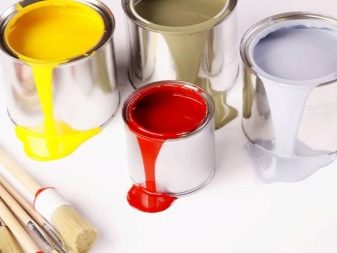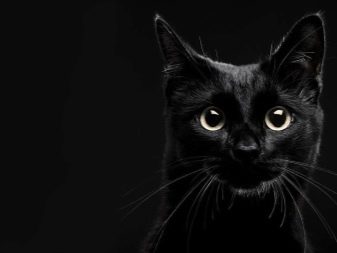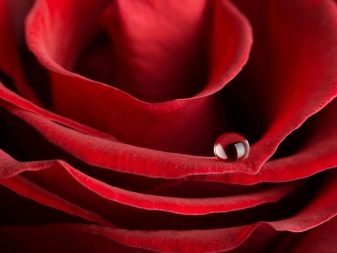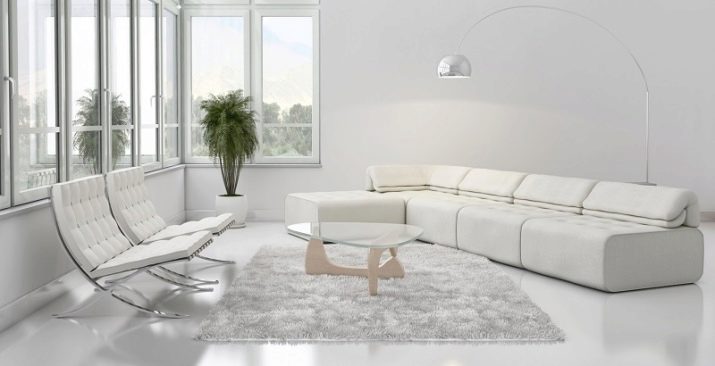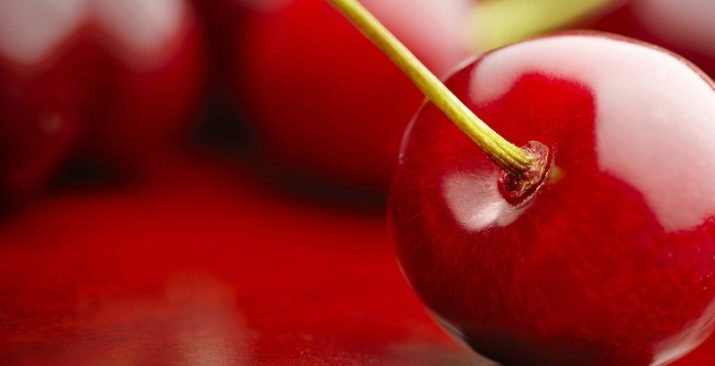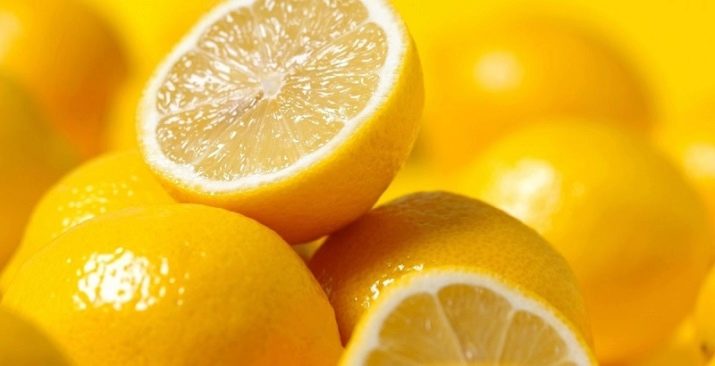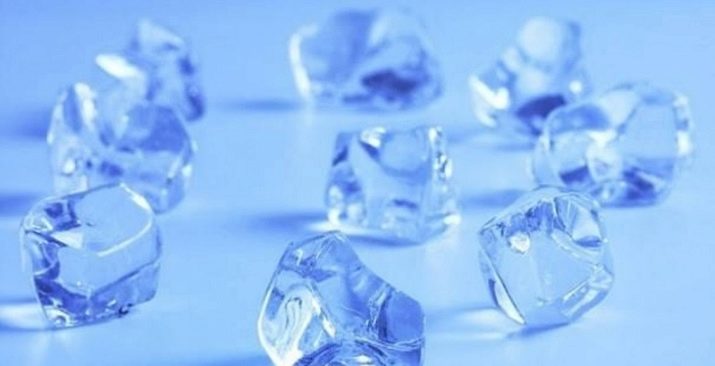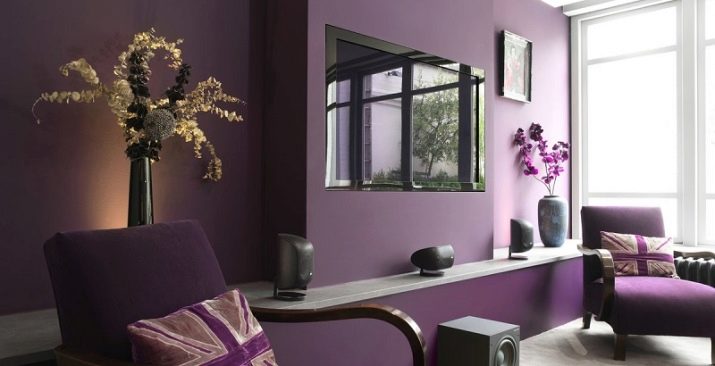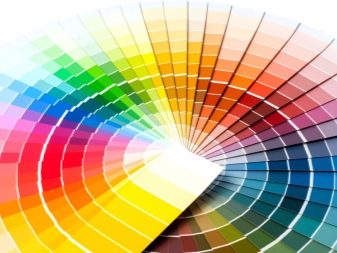The psychology of colors: the value and influence on the nature and psyche of man

Man lives in color: nature and artificial surroundings - everything has its own shades. Consciously or not, people prefer certain colors. This choice may be temporary or persistent, it may be due to personal experience or the experience of generations. There is an inverse relationship between the inner state of a person and the color they prefer. About this fact proved by science and experience of mankind this article will tell.
Brief description of the main palette
Before talking about the mutual influence of character and color, it is worth determining their meaning. The study of the meaning and semantics of colors involved in psychology. Below is a table with a list of basic shades and their meanings.
White | It symbolizes light. White exists in the confluence of all the colors of the spectrum, so it can mean the beginning of everything. Spiritual purity. Cold, detachment. In many rituals - the end of life. |
Gray | Mediator between white and black, light and dark. Old age, poverty. Static, immobility, invisibility (gray fog, "gray mouse"). Used for masking. |
The black | Denial of everything, evil, aggressive claims to power. Unconsciousness, uncertainty, finiteness. Heavyweight (“black work”). Also black means mystery, hiding. Can be used for masking in the content of dark and dark shades. |
Yellow | Creativity, the triumph of selfless love for the world and people, acceptance, consent. Yellow sun, wildflowers, plant seeds, egg yolk, some birds plumage. Joy. |
Green | In the green grass, foliage is worn in the spring ground. The main action of this color is the balancing of life processes. He calms, helps soberly look at the situation. Indifferent, contemplative. |
Red | Symbolizes blood, kinship, fire, sun ("red sun"), life. Speaks of action, impulsiveness. Worries, calls and warms. Performs signaling function. Widely used in the symbolism of nations. |
Orange | Also very vital, cheerful color. In nature, it is reflected in the sun when its energy is especially strong, in citrus fruits, in vegetables, in many insects and birds. He encourages creativity. It warms, gives strength, joy and energy. |
Blue | A lighter shade of blue - blue, indicates coolness, serenity and calmness. Coinciding with the color of the sky, he turns to the sublime, the spiritual. Psychophysical properties: cools and soothes, reduces heartbeat and reduces muscle tension. |
Blue | Heavenly and marine color. Means loyalty and constancy. Pacifies and gives peace. Too rich shades of blue can remind of a storm at sea and, conversely, cause concern. |
Violet | Combines red and blue. In the context of the transition between them has a secret and is mystical. The symbol of power and chastity, intelligence. |
Purple | Also a mixture of blue and red, but closer to red. Passionate color, color - upstart. May symbolize superiority, power. Sharply stands out in the spectrum and attracts attention. |
Cherry | When brown is added to red, then the shade is grounded, becomes more staid and solid, loses its impulsivity, but still feels important and significant. |
Purple | More gentle, dreamy shade of purple.Sublime and spiritual, but in abundance leads to isolation. |
In this table were considered generally accepted values and symbols of primary colors and shades. This knowledge will help to get closer to understanding the psychology of color. To further deepen the topic you need to know what qualities a person has, who prefers certain colors.
How to determine the character of your favorite colors?
To judge the character of a person, you need to take into account his position in life, the situation in which he is now, fashion. That is, you need to know something else about him, except for his addiction to any color. After all, his choice may well be dictated by the requirements of fashion, to emphasize the symbolic meaning of clothing or conformity with a particular style. Noticing, with things with a predominance of what color a person surrounds himself in an informal setting in different situations, it can be concluded about certain qualities of his character.
It is worth paying attention not only to the color of clothes, but also to decorations, interior, dishes, products. If the choice is dictated by a momentary mood, then the person constantly seeks to be in the setting of a certain color range. What color do you like the most, it’s easy to unobtrusively find out in the conversation. Usually, people do not get wary when they talk about their preferences.
So, the description of qualities of the people adhering to a certain color palette.
- White. It symbolizes and carries the image of light. Therefore, a person who prefers this color tends to purification, to the light. For him, clarity and transparency in everything is important. There may be a desire for perfection and perfection (here it is worth remembering the white robes of doctors - impeccable sterility). Another quality emphasized by white is innocence. As a sign of her, as well as a sign of the beginning of a new life (“start life from scratch”), they wore a white veil of the bride. In certain quantities and combinations, he can emphasize coldness and heartlessness.
- Black. Often, the choice of black shades is dictated by social conventions, then it means rigor, elegance. When this choice is due to psychological reasons, it can be caused by melancholy, internal emptiness, turning into rejection of one’s state, one’s life. Addiction to black color speaks about protest, aggression. The mood of such a person is peremptory, not intended to solve the problem. Examples of black lovers: nihilists, rockers, emo - these people tend to be different, renounce social foundations.
- Red. A person who prefers red color, decisive, impetuous, confident. Being the color of fire, red warms, but can also cause overexcitation. Therefore, his fans are aggressive in their assertiveness. Often they act thoughtlessly, but desperate optimists are in terms of the worldview. These are natural leaders. Women with this color emphasize their sexuality and attractiveness. The burgundy shade of red makes a confident person calmly-active and restrained-proud, depriving them of excessive impulsivity and fussiness. But its extreme manifestation can be expressed in arrogance and arrogance. The combination of red and yellow - orange, combines in themselves and their qualities. This is the color that gives joy. People who love him are energetic and cheerful. Creative and creative, they are always full of new ideas. Friendly, balanced and non-conflicting. They are aimed at success and are able to achieve their goals. Inspiration and enthusiasm are also their distinguishing features.
- Yellow. People of this color are cheerful and friendly. Their need to give warmth is like the sun itself. Optimists, in all they notice only positive. These are creative natures, in which new ideas are constantly being born. For them, naturally open expression of their feelings. Accepting and supportive, good friends.
- Blue. A person who adores blue is usually calm and thoughtful, like a calm sea, but sometimes, when they prefer darker and deeper shades, they can be cold and passionless. They are reliable and loyal people, they can safely entrust their secrets. Self-control and self-discipline are clearly marked in their character. Those who love the blue, impressionable, loyal, prone to thoughtfulness and reflection people. They prefer peace. Predisposed to despondency. Turquoise like restrained, self-confident individuals. They are independent, but love the attention of others and communication. They have the ability to think unconventionally, so they always come up with something new, unfortunately, without applying it in practice.
- Purple. People who have a favorite color of purple, often feel a bit "not like everyone else." They prefer to live by their own rules. They are interested in mysticism, romance. Thinly feeling and striving for spiritual growth. Owners of high intelligence. The border location of violet between red and blue gives rise to constant internal contradictions and doubts. The qualities that characterize them are modesty, isolation, exposure to someone else's influence. Purple hue reflects superiority, narcissism, the desire for power and might. These people love to be the center of attention. Their impulsiveness and truthfulness helps to quickly solve problems. Lilac - a more subtle shade of purple. These people are characterized by sensitivity, love of art. In communication, they occupy an intermediate position, moving away from a direct conversation. Emotionally, they have to balance between optimism and depression. They love to indulge in nostalgia. In terms of support at a difficult time, you can always count on disinterested help from them.
- In the green palette the gustiness and joy of yellow are balanced by the coolness of blue. The value of green: calm, stop, pause, static. People who prefer green, balanced, stable and reliable. They are generous, sociable, friendly. Often compromise, not being able to defend their point of view, but not inclined to despondency.
Knowing a little about the person who interests you, and finding out his color preferences, you can better know his inner world, his psychological characteristics. A more complete picture of the personality can be made, knowing the effect of color on the human psyche.
How do different shades affect the psyche?
A person is constantly experiencing the effects of color - in things and clothes, in nature and food, at work and at home, during wakefulness and even in sleep. Due to the property of the human psyche to perceive objects both consciously and unconsciously, color is able to influence our state of health and mood, bypassing consciousness. Using this knowledge about the influence of different shades on the psyche, you can avoid their negative influence or, on the contrary, use their useful properties.
White
The impact of this color, which absorbs the whole spectrum, contributes to both mental and physical purification. Gives a feeling of purity, refreshing. May cause feeling cold. White color symbolizes kindness, purity, sincerity, justice. To cultivate these qualities in yourself and attract others to them, you should apply it in the interior, in clothes. Being perfect, he is able to instruct. With an excess of possible anxiety, irritation, anxiety.
Enables the body's cleansing functions. Improves eyesight.
The black
It has a powerful effect on the human psyche. Suppresses, feels like gravity ("black cloud") threat ("black raven"), plunges into depression. Causes malice, gloomy aggression. As a means of social adaptation performs the function of limiter and smartness (the creation of a formal business atmosphere). Emphasizes solidity and thoroughness. May give a sense of security.
It has the ability to devastate, which is sometimes used for self-tuning in order to penetrate the subconscious. Often the choice of black is a manifestation of protest, renunciation. Then being in his aura can help you understand and find yourself. After that, the transition to other colors must be done gradually.
Red
The positive effect of red is invigorating and toning. It is useful in distemper and depression, to overcome weakness and despondency. Increases self-confidence, improves mood. It is appropriate to use it in situations when it is necessary to defend your opinion. To achieve the above effects, it is better to apply it in the morning, as in the evening it can cause overexcitement and poor sleep. The abundance of red can cause aggression and irritability. In moderate quantities, it warms, improves metabolism, increases blood pressure.
It stimulates the appetite, so red accents will be appropriate in the kitchen and in the dining room.
Orange
The main influence of this color is a positive attitude. The inclusion of orange motifs in everyday life stimulates activity, the desire to create something new, allows you to feel the taste of life. Orange helps to concentrate on the task, successfully conduct a dialogue, adds courage and decisiveness.
Improves digestion. Stimulates respiratory activity, normalizes hormones. The use of orange is very appropriate for career success. But even in the family sphere, his influence can be positive, since it increases the attractiveness, and his warm, bright energy can become a family amulet when he adds it to the interior, clothes and favorite things.
Yellow
This color gives joy and charges with optimism. Promotes acceptance of his environment. Stimulates mental activity, contributes to the formation of talent. Shades that are closer to lemon yellow improve mood and lift the mood. Shades of yellow and brown can remind of autumn, evoke sadness. A positive effect on the work of the joints and spine, and also improves the condition of the skin.
This color brings warmth to the interior, but constant intensive exposure can lower self-control and contribute to mood swings. May interrupt sleep when exposed to the night.
Blue
Improves concentration, contributes to increased self-control. Clarifies and refreshes the thought. Allows you to gain self-confidence, gives peace and serenity. It is useful to use it when there is a need for discipline, prudence and sober analysis. Dark, dark shades of blue cause anxiety and depression. Therefore, taking into account personality types, it is better to recommend them to people who are restless and excitable, and those who are prone to melancholia should not be used in clothing and in the interior.
Blue color lowers pressure, calms the nervous system, relaxes.
Blue
Combines blue and white. Helps to relax, calm. It is good to use it when it is necessary to concentrate, to put thoughts in order. Promotes effective communication, expression of thoughts, stabilizes the emotional state. Often this color draws educational and medical offices. Increases immunity, favorably affects the state of ENT organs. Excess may cause drowsiness.
Turquoise
Good relaxes physically and psychologically. Reduces manifestations of aggressiveness, soothes a surge of emotions. These properties are especially applicable in color therapy and for auto-training.
Green
The color of grass and trees is to surround yourself with those who lack a positive perception of the world, calm and harmonious interaction with their surroundings, confident movement towards the goal. Psychological qualities inherent in color - sociability, contact, confidence. Warm shades soothe, but not relax, but promote productive activity. Excessive dark tones can act depressingly, this is confirmed by the phrase "melancholy green."
Exposure to green in the morning may cause drowsiness. But he is well relieves from negative emotions and promotes good healthy sleep. Therefore, before going to bed, its use is appropriate, for example, green lighting in the bedroom or green linens.
The positive effect of green on the organs of vision, brain activity, attention was noted. It is also able to normalize the work of the cardiovascular and respiratory systems, improve appetite.
Violet
It stirs the imagination, inspires creativity, dreams. Often used for meditation. It improves memory, attention, stimulates intellectual activity. Good for thinking, which helps to solve problems more easily. Too much of this color in space leads to excessive self-control, overvoltage, depressed state.
Normalizes blood pressure, reduces heartbeat, stabilizes the psycho-emotional state, improves sleep and restores the body. The unusual and attractive purple color is often used in packaging design. It indicates refinement, mystery, thereby fueling the interest of the buyer.
So, color affects the mood, well-being, perception of the world. Regulates thought processes, is able to affect the physical state, sleep, state of health.
By choosing the right shades in clothes, interior, products and drinks, you can effectively manage your well-being and mood and improve the quality of life.
Opinion psychologists
Max Luscher is the founder of color diagnostics. Before him, many thinkers and philosophers investigated the influence of colors and gave an interpretation of their meanings. But he first developed and successfully used a color test. There are a total of 8 colors: 4 primary (red, blue, green and yellow) and 4 additional (gray, brown, purple and black).
According to Luscher, normal primary colors should occupy the first 4 places in the sample. If preference is given to the additional, and the main ones are chosen at the end, then it can be safely stated that a person suppresses some of his basic needs. This means that he lives in suspense, looking for ways to compensate for their dissatisfaction. Self-deception and the illusion of meeting basic needs lead to the fact that he does not live a full life.
Luscher, comparing the speech describing the mood of the client and color choice, argued that the latter can not deceive. And indeed, the color test quite accurately determines the emotional state at the moment.
From the point of view of one of the researchers of the color perception of Ch. A. Izmailov, most of our emotions can be arranged on the color spectrum. And then, according to his theory, most of the human emotions will be placed in the color scheme from blue to blue-red and purple, and a smaller part - in the range of green and green-blue. The rest, a very small part - in the field of lime shades.
G. Flirring has developed a test for the study of personal characteristics: "Color mirror". The choice of colors determines the personality psyche:
- green and blue - thinking;
- red-orange is sensual;
- olive green - intuitive;
- yellow-orange - extroverted;
- purple-black-pink - introverted.
According to VM Bekhterev, a well-chosen range of colors has a healing effect on the nervous system, even more effective than drugs.
The curative influence of colors is confirmed by history For example, the ancient Chinese cured smallpox scars, basking in the sun on red silk. In France, window frames were painted blue to scare away flies.Yes, and on my own experience you can see that being in a brightly-colored room excites, in being executed in dark colors - suppresses, and in bright, delicate - soothes.
Tom Schreiter conditionally divided people into 4 color types, which can be recognized by their behavior and preferences.. If you briefly characterize them, then yellow is sociable and sympathetic; blue - cheerful, impulsive, convivial; red is a natural leader; green is an introverted researcher and thinker. The purpose of this separation is to know and understand the interlocutor and communicate with him in his language.
It is clear that in every person, as in a unique personality, all types can be combined and intertwined, that individuality cannot be measured by color alone. But with information about the meaning of colors, their impact on the physiology and psychology of man, the relationship of color preferences and character, you can get to know yourself, your interlocutor and “tune” your life, health and relationships in accordance with your true desires and needs.
